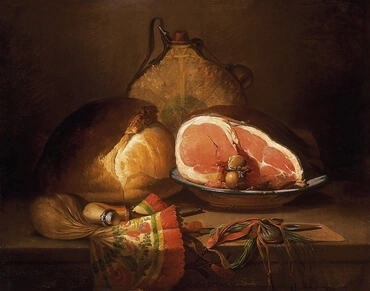Apocalypse Revealed # 601
601. Telling those dwelling upon the earth to make an image of the beast that was injured by the sword and lived. This symbolically means that the clergy induce people in the church to accept as doctrine that faith is the only means of salvation, because no one can do good of himself without its being merit-seeking, and because no one can fulfill the law and in that way be saved.
Those dwelling upon the earth mean people in the Protestant Reformed Church, as in no. 600 above. The image symbolizes the doctrine of that church, as explained below. And the image of the beast that was injured by the sword and lived symbolizes this tenet of the doctrine, that faith is the only means of salvation, because no one can do good of himself without its being merit-seeking, and because no one can fulfill the law and in that way be saved (see nos. 576, 577ff. above).
[2] Every church appears to the Lord as a person. If it is governed by truths from the Word, it appears as an attractive person. But if it is caught up in truths falsified, it appears as a hideous person. The church appears as it does in keeping with its doctrine and in keeping with its life in accordance with that doctrine. It follows from this that a church's doctrine presents an image of the church.
This can also be seen from the fact that every person embodies his own goodness and truth or his own evil and falsity. It is this and nothing else that makes a person human. Consequently it is doctrine and a life in accordance with it which produces the image of a person in the church - the image of an attractive person if the doctrine and his life in accordance with it conform with the Word's genuine truths, but the image of a hideous person if they accord with the Word's truths falsified.
[3] In the spiritual world, moreover, a person appears as a kind of animal, but it is his affection that so appears at a distance. People impelled by truths and goods from the Lord look like lambs and doves, while those caught up in falsified truths and adulterated goods look like owls and bats. People possessing a faith divorced from charity look like dragons and goats. Those caught up in falsities springing from evil look like basilisks 1 and crocodiles. And those who are of this character and yet have affirmed the teachings of the church look like fiery flying serpents.
It can be seen from this that the church's doctrine and a life in accordance with it are meant by the image of the beast which the people made for those dwelling upon the earth.
[4] But what eventually became of those who worshiped the image of the beast may be seen in Revelation 14:9-11; 19:20, cf. 20:4.
Images have similar symbolic meanings in the spiritual sense in Exodus 20:4-5, Leviticus 26:1, Deuteronomy 4:16-18, Isaiah 2:16, Ezekiel 7:20; 16:17; 23:14-16.
Among the ancients, idols and carved images were symbols of their religious faith. Consequently they symbolize doctrinal falsities and evils (no. 459).
Poznámky pod čarou:
1. Legendary serpents or dragons, whose breath and glance were said to be lethal. Formerly identified in English translations of the Latin Vulgate with the cockatrice, and retained as such in the King James Bible.
Maso

Takže význam „masa“ se může změnit z naší původní vůle, protože je na náš popud as pomocí Páně demontován kousek po kousku, na novou vůli, která ji nakonec nahradí. To je důvod, proč při některých obětech izraelské církve mělo být maso spáleno a v jiných mohli maso jíst kněží. To, co představovalo starou původní vůli, bylo spáleno, ale to, co se dalo jíst, představovalo novou. Každý má takový balíček lásek a může být docela zlý, smíšený nebo docela dobrý, stejně jako každý má maso. Naší duchovní prací, když žijeme, je změnit tento balíček, jednu náklonnost po druhé, ze špatné na dobrou. Pokud se o to pokusíme, Pán nám pomůže Flesh má několik významů právě ve své nejviditelnější podobě. Může to znamenat všechna živá stvoření, jako když Pán mluví o potopě, která „ničí všechno maso“ (Geneze 7:21), nebo to může znamenat celé lidstvo (Geneze 6:3), nebo to může znamenat něco měkkého a poddajného, jako je srdce z masa, které nahradí kamenné srdce (Ezechiel 11:19) Ale duchovně to znamená, že lásky, které přebývají ve vůli člověka, a zdá se, že k této osobě patří, být touto osobou. Touto osobou může být ten, kdo se nezačal regenerovat (nebo nikdy nebude), nebo ten, kdo je uprostřed procesu, nebo ten, kdo se blíží ke konci. V nejvyšším smyslu tělo znamená lásky, které jsou v Pánově vůli a které jsou božské. Tento význam je jasný v Pánových slovech v Janově evangeliu (Jan 6:53-56) Když začneme, naše lásky jsou sobecké a duchovně jsme mrtví, stejně jako kosti, které viděl Ezekiel, ale když vytrváme v odvracení se od našich zlých, Pán způsobí, že se kosti shromáždí a přijde na ně maso, měkký a milující a ožijeme novými vnějšími láskami, které nahradí staré sobecké.






